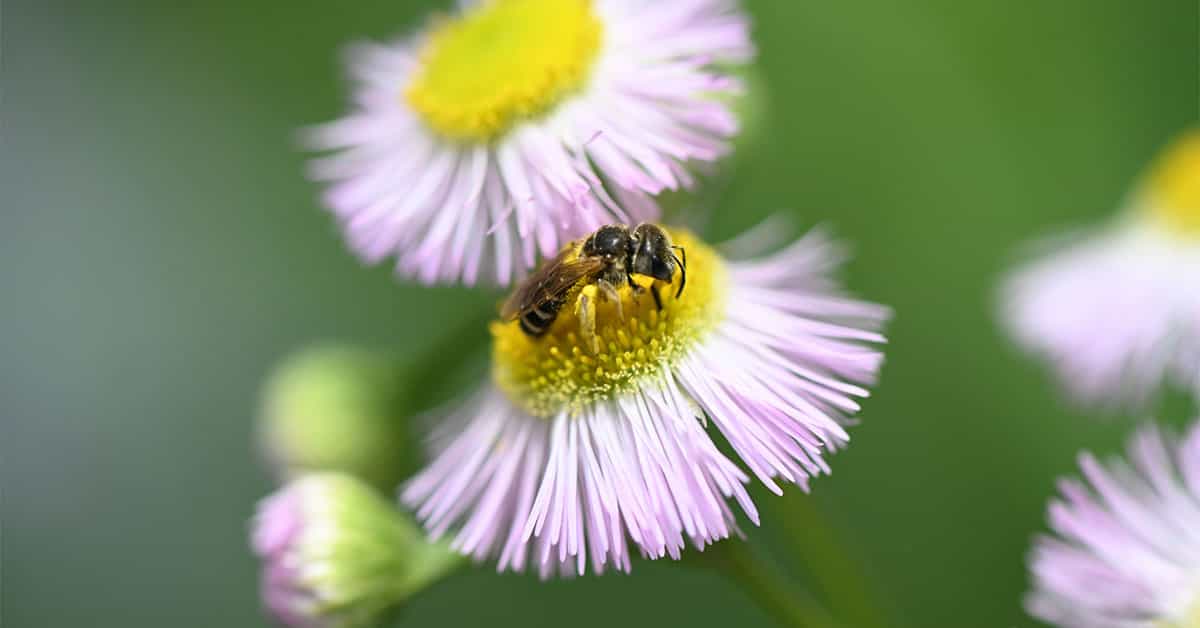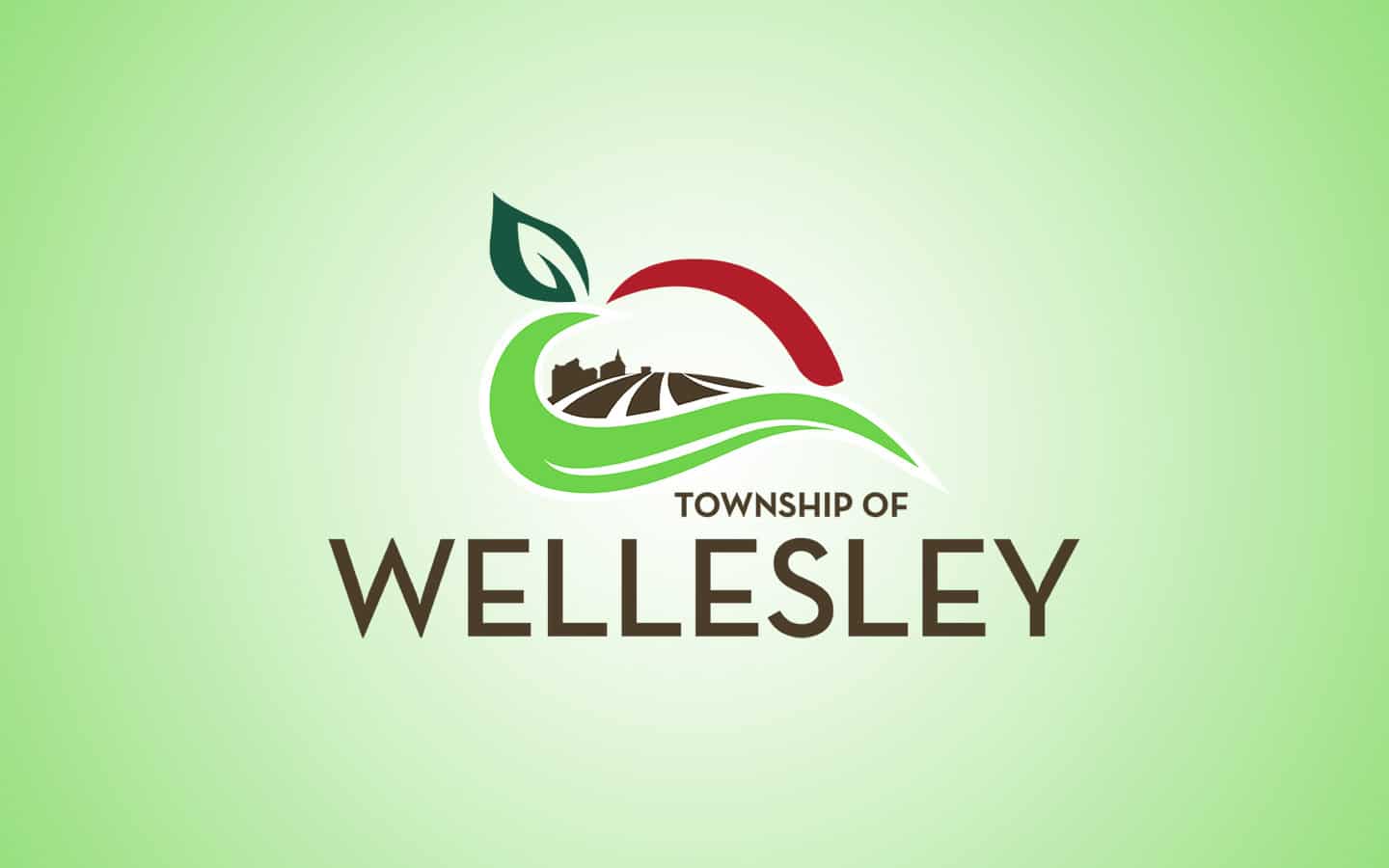If falling numbers and ongoing concerns about pesticide use weren’t enough of a threat to bee populations, it now appears we may not be setting aside enough land for the pollinators.
A new University of Guelph study shows the province needs to conserve about 11.6 to 16.7 per cent of land cover, including a variety of habitats, to safeguard wild bee populations.
The provincial government outlined a strategy in 2016 called the Ontario Pollinator Health Action Plan that aimed to conserve a million acres of pollinator habitat. While the study’s authors acknowledge that a million acres seems plentiful, in fact, the amount of land needed to actually conserve pollinator populations is much larger.
“Investigating the amount of habitat needed to support biodiversity is crucial for developing impactful and critical policy around conservation at all levels of government,” said Alana Pindar, a lead researcher on the project.
The researchers found that the conserved land needs to include a diverse range of types of habitat, including wetlands, and that connectivity of conserved spaces is important. As well, the percentage of conserved land needs to apply at every scale.
“This is a percentage of the landscape at a bee scale. So, for example, you could say on a farm, or in a garden, or in a community space, or when you’re planning a city landscape, it would be great to have somewhere between 11.6 and 16.7 per cent of the landscape that was supportive of pollinators in that landscape,” said Nigel Raine, the other lead researcher on the project.
“What we’re saying is that if we can think about that at all scales, really. If we sort of took out a section that was 11.6 to 16.7 per cent of the whole of southern Ontario and just put that in one big block, that wouldn’t be particularly helpful to support pollinators.”
The pair of researchers aimed to calculate how much of each specific habitat type is needed to support a specific kind of pollinator community.
The concept of calculating the amount of habitat needed to be conserved and built up across a landscape in order to preserve pollinator populations is not new. In 2015, the UK government unveiled a new scheme to pay farmers to preserve and enhance habitat needed by pollinator populations on their properties, along with other needed stewardship activities. The amount of land included for conservation was calculated according to pollinator conservation needs.
To conduct the University of Guelph study, the team looked at about 66,000 surveys of bee populations in Ontario over 12 years. That included the findings of what kind of habitats were present for each survey through precision mapping data. They looked at five main types of bees, including solitary ground nesters, social ground nesters, cavity nesters, bumblebees and cleptoparasites and social parasites, and found the amount of specific habitat-type needed by each at local and landscape scales.
Raine says the planet is losing pollinators at a time when they’re needed even more since, as incomes are going up around the world, the demand for crops that rely on pollinators is increasing. These include the likes of fruits, vegetables and nut crops. As well, with more people on the planet, total demand for food increases, he said.
So what happens if we lose pollinators?
“From time to time, [we hear] this sort of spirit that if we lose the bees, then we’ll all die within five years, which is not true,” said Raine. But he did outline what a future without pollinators would realistically look like.
“We’ll have a much more depauperate (less diversified) diet,” he said. “We’ll still be able to grow a whole bunch of things that are wind pollinated or self-fertile, so lots of cereals and those things, but the fruits and vegetables, particularly, may be things that we will find very much harder to grow effectively except in some sort of controlled systems, maybe. That means that a lot of the micronutrients that we need – things like vitamins and other micronutrients – that will be much harder to find in our diets. It will really change our diets if we lose pollinators and lose the pollination services they provide for crops.”
Raine said there are more and more studies reporting pollination services provided by wild and managed pollinators are falling short of what pollination crops need to achieve their highest yield and quality.
For example, a three-year study of 24 conventional apple orchards in Kent, UK, published last year found pollination deficits (where maximum crop potential was not reached because of a lack of pollination) between three and 22 per cent, or approximately $3,350 to $23,460 of product lost per hectare.
“We are at a pivotal point and can’t assume policy makers have all the information,” said Pindar. “Connections, outreach, communication and education are very important!”
“This study really underlines how important the abundance and diversity of bees are, selfishly in terms of crop production, but also more generally,” said Raine. “They’re providing services to a whole swathe of wild plants that are important to maintaining our environment in the way we want it to be maintained. We need to find more space and we need to find more protection for sensitive habitats to support these and the pollination services they provide.”









